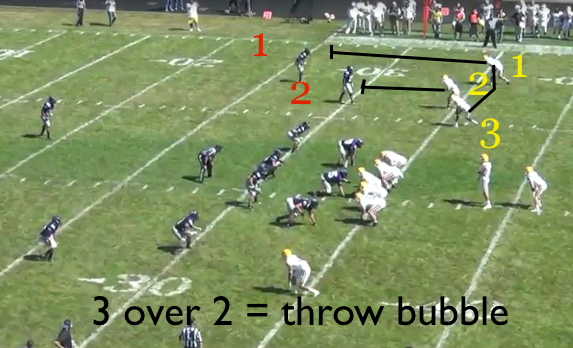
Soon, many of you will begin researching and making plans for evolving our offensive system. While the process is usually fun, the following ideas can help focus your efforts and make the time spent productive.
Evolving your system should begin with a general inventory of what you are doing right now along with the stats on each concept, formation, procedure and personnel group from the 2013 season. Below is a list of questions to consider.
General inventory of our offense:
What is our offensive philosophy?
What is our philosophy in each of these categories: Procedures, Personnel, Formations, Running Game, Passing Game?
List all of the terminology that is used throughout the structure of offense.
How many words are used in each of the categories: Procedures, Personnel, Formations, Running Game, Passing Game?
Are there opportunities for confusion in our structure? For example, do we label a pass play in with an NFL team name, but also use an NFL team name for a formation?
Did we create a structure that is clear and concise with its use of words or numbers?
Procedures:
What procedures exist in our offense now?
Are there advantages we are not thinking about in varying our tempo or having the ability to use cadence as a weapon?
If we were to utilize no-huddle, how will we communicate and is our system set up for communication in a no-huddle procedure?
Personnel:
Are we fully utilizing the personnel we have?
What skills does each of our players have that we can build around?
Do we have a system of substituting personnel packages into a game?
Is it flexible enough to have the answers we need from year to year?
Is it simple enough for the players and coaches to use?
Formations:
How many words make up our formation system?
What do they mean?
Are there terms that cause confusion?
Can we align quickly and without error?
Is our system flexible and multiple enough to move our offense along the spectrum of a compressed multiple back offense to spread shotgun if we choose to move in either direction?
Running Game:
Do we number our plays or name our plays?
What is the specific structure we use to communicate who is carrying the ball, direction of the run, and blocking scheme?
How many plays or schemes do we utilize? Can we combine or delete different plays to become more efficient?
How many practice reps are available to practice all of these plays?
Passing Game:
Do we use numbers or names or both for our passing plays? If we use both, is there a consistent reason for using both numbers and words?
Do we memorize a play or utilize concepts in which we teach a rule based on alignment? Which is best for our system?
Are passes tied directly to formation, or do we have ways to call the pass from multiple formations or personnel groupings?
How many plays or routes do we utilize? Can we combine or delete different plays to become more efficient?
How many practice reps are available to practice all of these plays?
Next, you will want to list some of the ideas you had or concepts you are interested in, and find your resources. Those resources can come from a variety of places like visiting other college or high school teams, coaches clinics(though you may not get the depth you need from a clinic), dvd’s, books, and online resources.
For over 700 links to offense resources click here.
After obtaining all the information you need, you should evaluate how it will fit. Andrew Coverdale, Offensive Coordinator at Trinity HS in Louisville, describes that process as follows:
Off-season thought process
4 major questions:
Does it fit our philosophy?
Does it fit our kids?
Can we coach it and fix the problems?
Does it help us beat the key teams on our schedule?
That is a sound thought process when considering additions and selections to your offense. Learning football is always fun, but the great ideas you uncover in the off season must translate to success on the field. If you can answer “yes” to all of those questions, then maybe it should become part of your offense. Remember though, when something goes in, usually it means something should be cut in order to remain efficient in how the entire system is practiced.
For more on evolving your offense read my first article on AFM, “Creating an Offensive System.”
My iBook 101+ Pro Style Pistol Offense Plays provides concepts that can be utilized in any offense, not just the pistol. I have received some great feedback from coaches who adapted all or some of those ideas in 2013. Get 101+ PRO STYLE PISTOL OFFENSE PLAYS for your iPad or Mac from the iBookstore.








